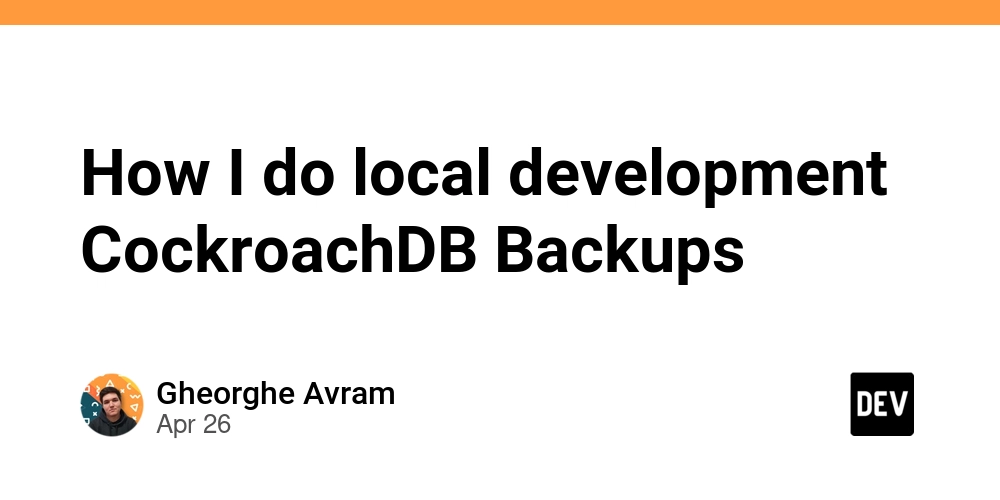
Local CockroachDB Backup and Restore: A Simple Developer's Guide
Want to master local CockroachDB backups and restores for faster development? This guide provides a streamlined approach, perfect for developers seeking a repeatable and efficient workflow. Learn how to easily back up and restore your local database using docker-compose and simple commands. This is very helpful to have for local development.
The Problem: Painless CockroachDB Backups and Restores
Setting up reliable CockroachDB database backup and restore procedures can be a hassle, especially during local development. You need a way to:
- Regularly save your database state.
- Quickly restore from backups after data corruption or accidental changes.
- Keep your backups organized and accessible.
Solution: Automating Backups and Restores
This guide uses simple scripting alongside a docker-compose.yml file to automate the backup and restore processes for your local CockroachDB instance.
1. The docker-compose.yml Configuration
First, let's look at how to set up the docker-compose.yml file for seamless backup access:
The magic happens in the volumes section. We're binding the /cockroach/cockroach-data/extern directory inside the container to a local folder named cockroach-extern in your project. Then CockroachDB saves all backups to this folder, making the backup files easily accessible from your host machine.
2. Taskfile for Easy CockroachDB Command Execution
To simplify running backup and restore commands, we'll use a Taskfile.yml:
- Backup Task: Executes the
backup-totask, creating a backup in the specified folder. - Restore Task: Executes the
restore-fromtask, dropping the existingdefaultdband restoring it from the latest backup.
3. Backup your CockroachDB database
To take a full backup of your local cockroachdb database, simply run:
This command executes the SQL command to create a full backup of your CockroachDB instance and stores the resulting data in the cockroach-extern/backup/local-node-backup directory.
4. Restoring your CockroachDB database
If you need to restore cockroachdb default database from a previous backup, run:
This command restores the database from the most recent backup located in the specified directory (cockroach-extern/backup/local-node-backup), first dropping the existing database.
Benefits of using CockroachDB backup
- Fast Recovery: Quickly revert to a previous state after errors or accidental data changes.
- Local Accessibility: Backups are stored locally, making them easy to access and manage.
- Automation: The
Taskfile.ymlautomates the entire process, eliminating manual steps and potential errors.
Taking it Further with local development
This setup provides a solid foundation for managing local CockroachDB backups. Consider exploring these enhancements:
- Scheduled Backups: Use cron jobs or similar tools to schedule regular backups.
- Version Control: Store your
cockroach-externdirectory in Git to track backup history. - Cloud Storage: Sync your local backups to a cloud storage service for offsite redundancy.
By implementing these strategies, you can ensure the safety and accessibility of your CockroachDB data, streamlining your local development workflow. With these techniques, managing CockroachDB backups becomes a breeze, freeing you to focus on building great applications.